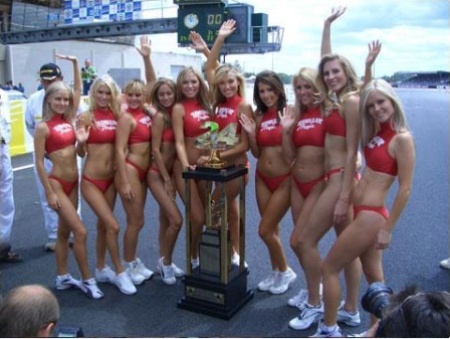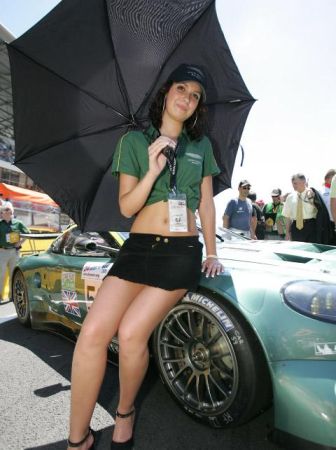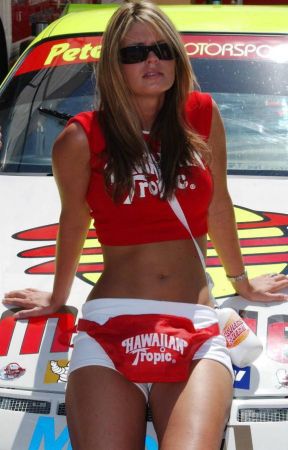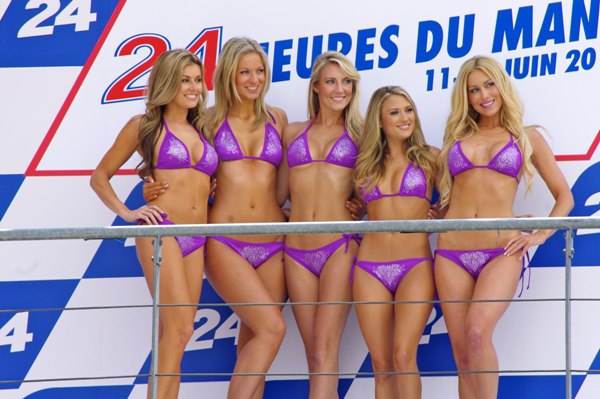
The 24 Hours of Le Mans (French: 24 Heures du Mans) is the world's oldest active sports car race in endurance racing,
held annually since 1923 near the town of Le Mans, France.
It is one of the most prestigious automobile races in the world and is often called the "Grand Prix of Endurance and Efficiency".
The race is organized by the Automobile Club de l'Ouest (ACO) and runs on the Circuit de la Sarthe, which
contains a mix of closed public roads and a specialist racing circuit, in which racing teams have to balance speed with the cars'
ability to race for 24 hours without sustaining mechanical damage.The race has over the years inspired imitating races all
over the globe, popularizing the 24-hour format at places like Daytona, Nürburgring, Spa-Francorchamps, and Bathurst.
The American Le Mans Series and Europe's Le Mans Series of multi-event sports car championships were spun off
from 24 Hours of Le Mans regulations. Other races include the Le Mans Classic, a race for historic Le Mans race
cars of years past held on the Circuit de la Sarthe, a motorcycle version of the race which is held on the shortened Bugatti
version of the same circuit, a kart race (24 Heures Karting), and a truck race (24 Heures Camions).
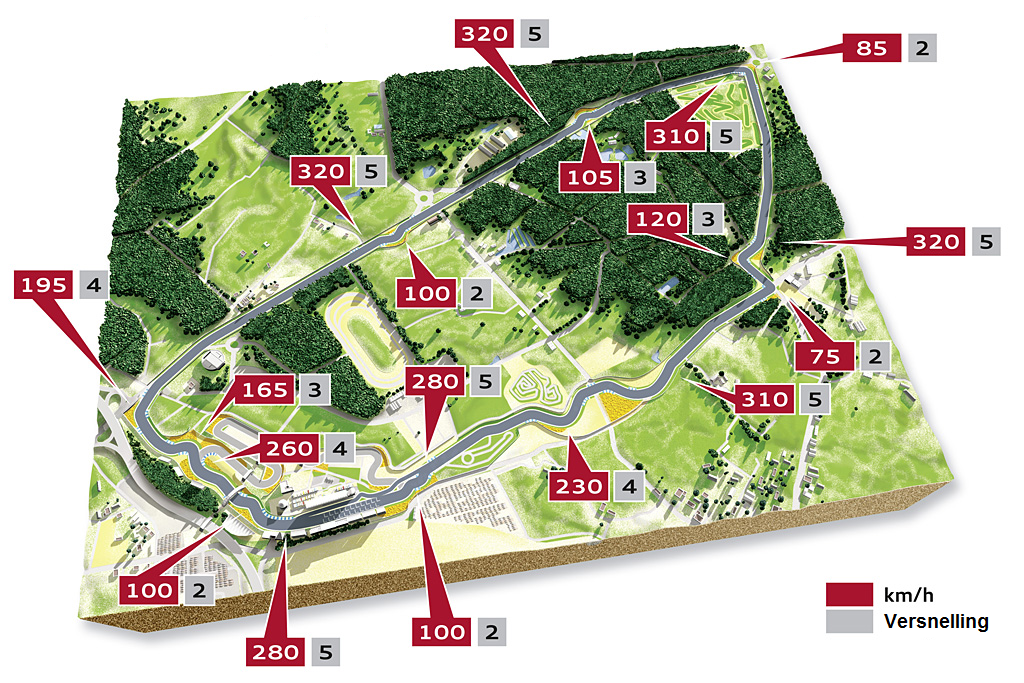
The circuit on which the 24 Hours of Le Mans is run is named the Circuit de la Sarthe, after the department that Le Mans is
within. It consists of both permanent track and public roads that are temporarily closed for the race. Since 1923, the track has
been extensively modified, mostly for safety reasons, and now is 13.629 km in length. Although it initially entered the town
of Le Mans, the track was cut short in order to better protect spectators. This led to the creation of the Dunlop Curve and
Tertre Rouge corners before rejoining the old circuit on the Mulsanne. Another major change was on the Mulsanne itself in
1990, when the FIA decreed that it would no longer sanction any circuit that had a straight longer than 2 km. This led to the
addition of two chicanes, reducing the time that the cars spent travelling at very high speeds on the old 6 km long straight.
The addition of the chicanes was another safety precaution after the WM P88-Peugeot of French driver Roger Dorchy had
been timed at 405 km/h (252 mph) during the 1988 race.
Due to the shorter length of the straights, top speeds at Le Mans are now generally around 205 mph (330 km/h).
The public sections of the track differ from the permanent circuit, especially in comparison with the Bugatti Circuit which is
inside the Circuit de la Sarthe. Due to heavy traffic in the area, the public roads are not as smooth or well kept. They also
offer less grip because of the lack of soft-tyre rubber laid down from racing cars, though this only affects the first few laps
of the race. The roads are closed only within a few hours of the practice sessions and the race, before being opened again
almost as soon as the race is finished. Workers have to assemble and dismantle safety barriers every year for the public
sections.
The Start:
The race traditionally began with what became known as the Le Mans start, in which cars were lined up along
the length of the pits. Until 1962, cars were lined up in order of engine capacity, but beginning in 1963 qualifying
times determined the lineup. The starting drivers stood on the opposite side of the front stretch.
When the French flag dropped to signify the start, the drivers ran across the track, entered and started their cars without
assistance, and drove away. This became a safety issue in the late 1960s when some drivers ignored their safety harnesses,
then a recent invention. This led to drivers running the first few laps either improperly harnessed due to attempting to do it
while driving or sometimes not even harnessed at all, leading to several deaths when cars were involved in accidents due to
the bunched field at the start.
This starting method inspired Porsche to locate the ignition key switch to the left of the steering wheel. In a left-hand drive
car, this allowed the driver to use his left hand to start the engine, and his right hand to put the transmission into gear,
which in turn shaves off a few tenths of a second.
Another method for speeding up the start was developed by Stirling Moss. His car was waiting with first gear already
engaged. When he jumped in, he switched the starter on without depressing the clutch. The car was immediately jerked
forward by the starter motor, but the engine did not start due to low RPM. After a few seconds of motion, he then pushed
the clutch down, allowing the engine to speed up and start while the car was moving.
Feeling this type of start was unsafe, in the 1969 race, Jacky Ickx opposed it by walking across the track while his
competitors ran. Although he was nearly hit by a faster competitor's car while walking, Ickx took the time to fasten his
safety belts before pulling away. Privateer John Woolfe died in an accident on the first lap of that race; Ickx won.
The traditional Le Mans start was changed for 1970. Cars were still lined up along the pit wall, but the drivers were already
inside and strapped in. At the dropping of the French tricolor, the drivers started their engines and drove away.
Since 1971, when that method was done away with, a rolling start (sometimes known as an Indianapolis start)
begins the race.
Classes:
Competing teams race in groups called "classes", or cars of similar specification, while also competing simultaneously for
outright placing amongst all classes. Originally, the race showcased cars as they were sold to the general public,
then called "Sports Cars", compared to the specialized racing cars used in Grand Prix motor racing.
Over time, the competing vehicles evolved away from their publicly available road car roots, and today the race is
made of two overall classes — prototypes, and Grand Touring cars (similar to sports cars sold to the public).
These are further broken down into 2 sub-classes each, open/closed cockpit prototypes and 2 subclasses of GT cars.
and to the overall winner. The number of classes has varied over the years, but there are now four. Custom-built Le Mans
Prototypes (LMP) are the top two classes, LMP1 and LMP2, divided by speed, weight, and power output. From 2011, the next
two classes are production-based grand tourer (GT) classes, GT Endurance Pro and GT Endurance AM.
Both of these classes utilize the LM GTE, or "Le Mans Grand Touring Endurance" regulations. Although the top class is the
most likely to be the overall winner, lower classes have won on occasion due to better reliability.
So here you will find models from the overall winners from every year I visited Le Mans.
Nope, I'm not collecting Audi's!

Le Mans Winners
The cars are feast for eye and ear, but also the girls on the grid deserve this title!
